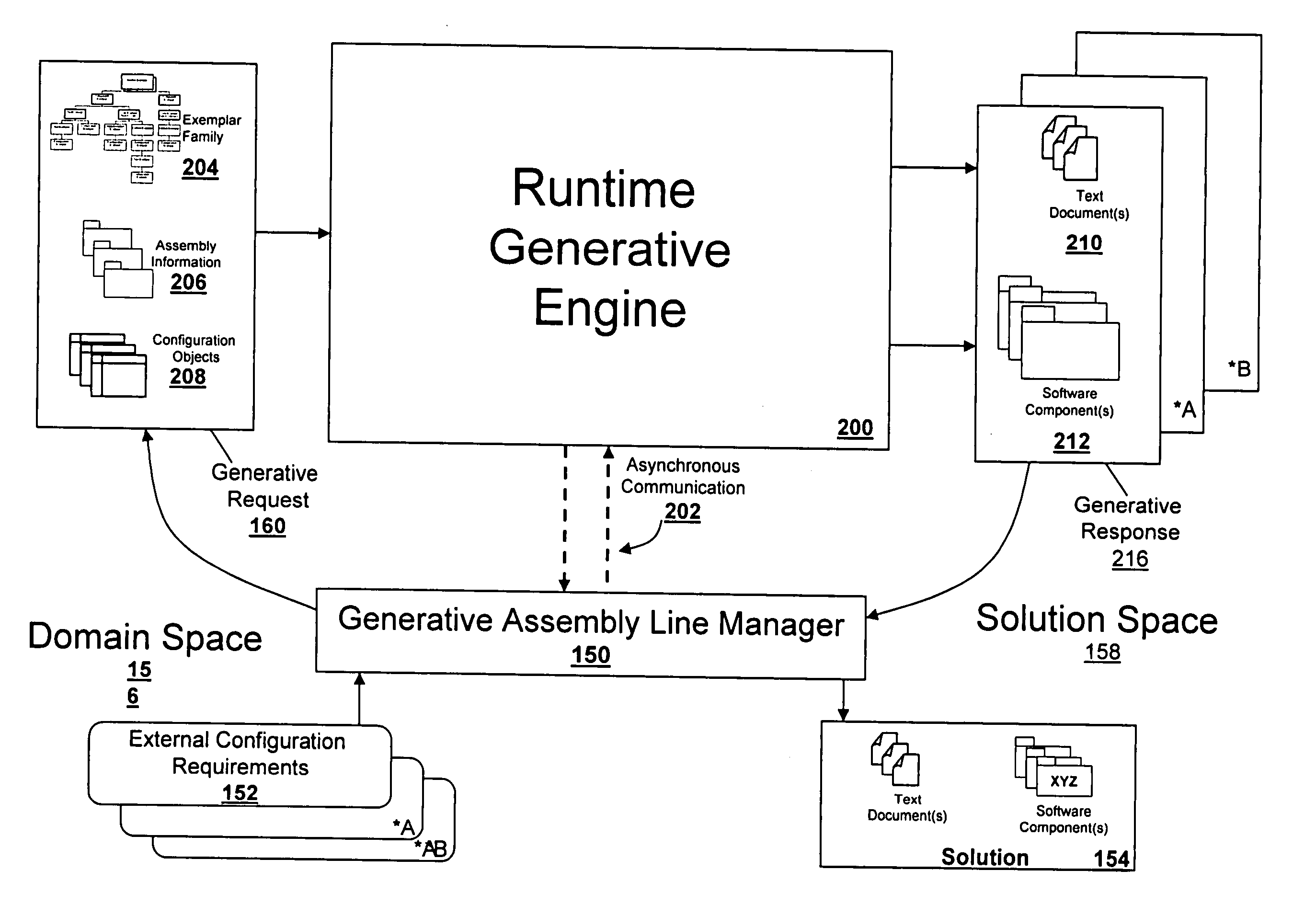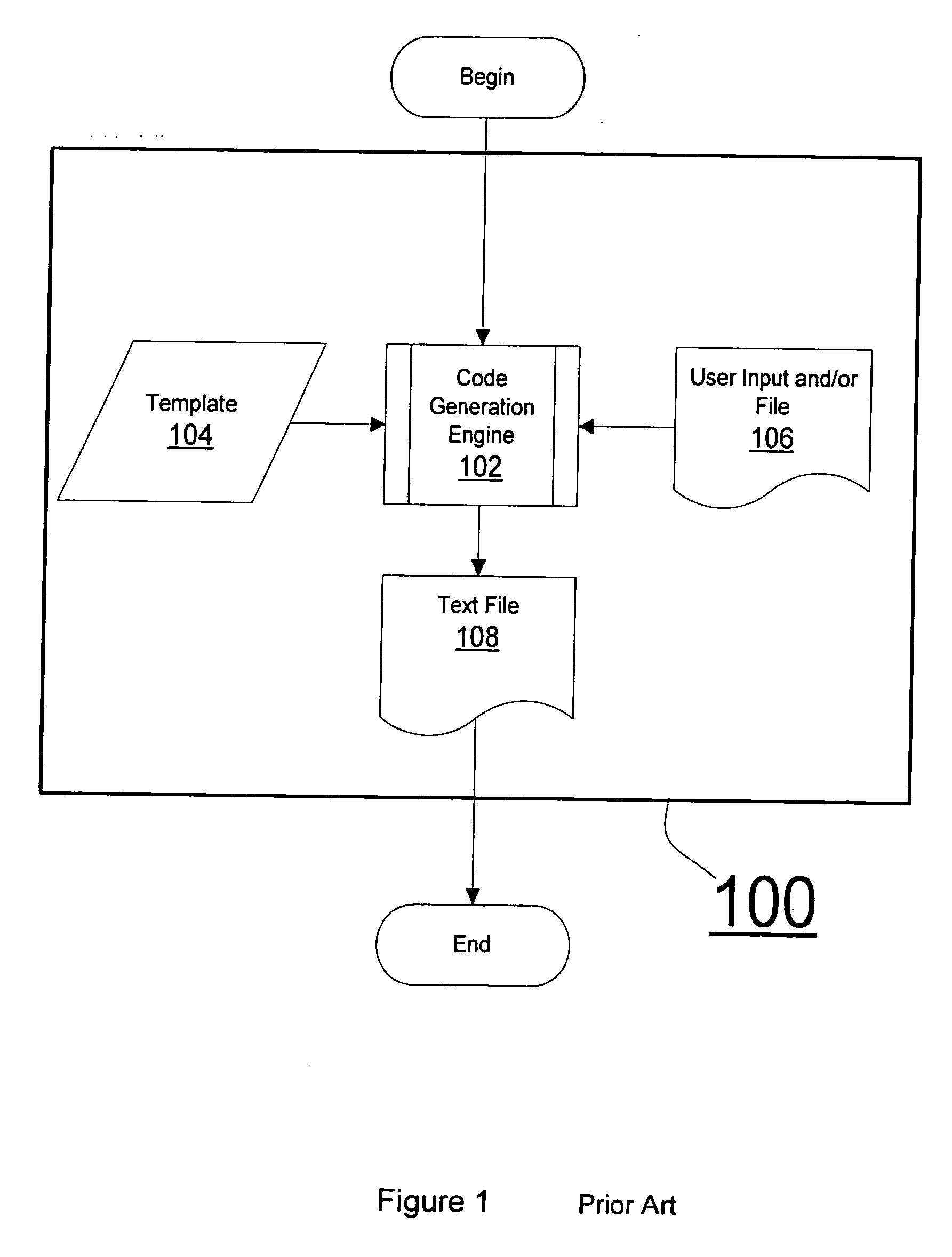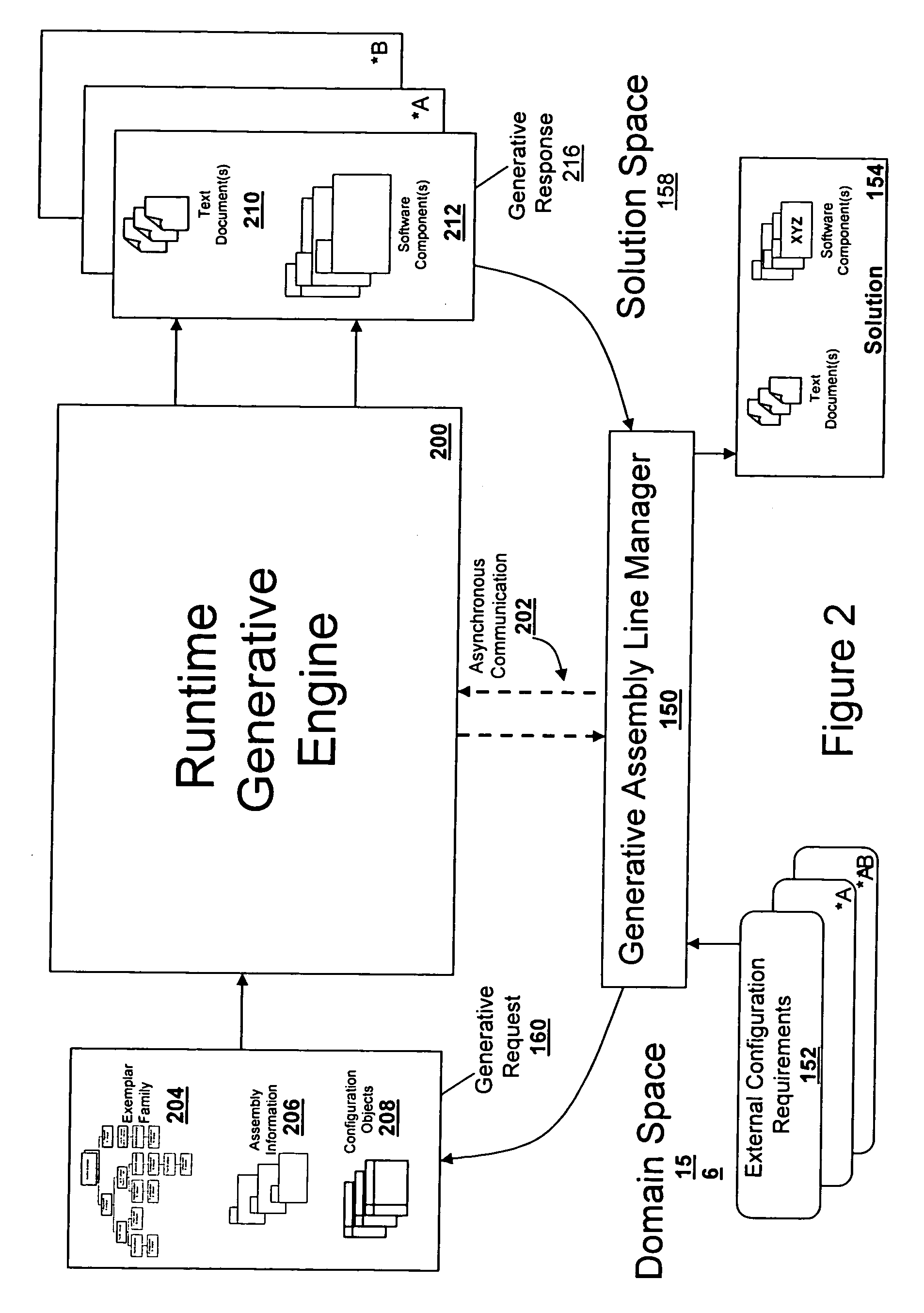Runtime generative programming method and system
- Summary
- Abstract
- Description
- Claims
- Application Information
AI Technical Summary
Benefits of technology
Problems solved by technology
Method used
Image
Examples
Embodiment Construction
[0055] An embodiment of the present invention relates to a method for the runtime configuration and generation of text documents and software components.
[0056]FIG. 2 schematically illustrates an overview of a runtime generative software development environment where a component or solution can be manufactured based on a runtime generative request according to an embodiment of the present invention; and FIG. 2′ illustrates in greater detail the ememplar family depicted in FIG. 2. Unique aspects of the invention are characterized by runtime input from a domain space (e.g., a family of exemplars 204, assembly information 206, and domain-specific configuration objects 208); the runtime generative engine 200; asynchronous communication 202 between the runtime generative engine 200 and external systems; and the generation of text documents 210 (e.g., XML, SQL, etc.) and software components 212 that map to a system within a solution space.
[0057] More specifically, a system external to th...
PUM
 Login to View More
Login to View More Abstract
Description
Claims
Application Information
 Login to View More
Login to View More - R&D
- Intellectual Property
- Life Sciences
- Materials
- Tech Scout
- Unparalleled Data Quality
- Higher Quality Content
- 60% Fewer Hallucinations
Browse by: Latest US Patents, China's latest patents, Technical Efficacy Thesaurus, Application Domain, Technology Topic, Popular Technical Reports.
© 2025 PatSnap. All rights reserved.Legal|Privacy policy|Modern Slavery Act Transparency Statement|Sitemap|About US| Contact US: help@patsnap.com



